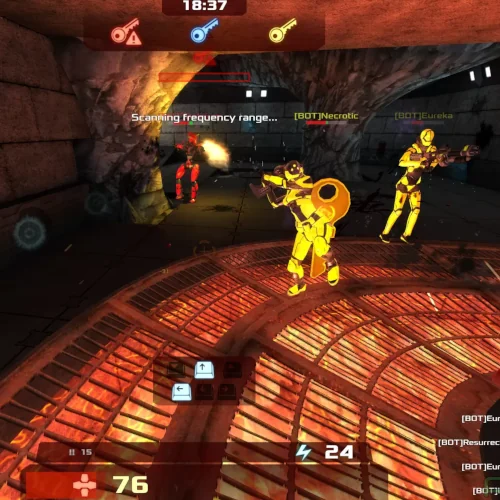A Battle For Good Open-Source Game Graphics?

Nexuiz has traditionally been at the forefront of being a game that provides the options to maximize the graphics intensity for your hardware, and with the recent release of Nexuiz 2.5 they further solidify their standing. Using all of the advanced game options with Nexuiz, the graphics quality can become impressive, but still not at the same quality of what has been found in Enemy Territory: Quake Wars on Linux for about two years.
Looking to challenge Nexuiz's position has been the XReaL engine, which in turn is based upon the ioquake3 code-base. XreaL features a GLSL renderer with OpenGL 3.1 support and numerous other rendering features not currently found in ioquake3. Its lead developer has even made the bold claim that XreaL is already the most advanced open-source game engine.
Besides Nexuiz and XreaL there are various other open-source games and engines too, but the latest one that is now looking to improve its graphics capabilities is Alien Arena. We have learned from John Diamond, the lead developer of Alien Arena, about some features of Alien Arena 2009. Alien Arena uses the CRX game engine, which is their own fork of the open-source id Tech 2 engine. The CRX game engine has since adopted many features not found in the original id Tech 2 engine, but now we are told by John that there are further improvements in the 2009 release.
With Alien Arena 2009, all in-game surfaces are now capable of being rendered in the GL Shading Language. Though for those without hardware or drivers that properly support GLSL, there still is fall-back support for older hardware. The game developers have also upped the "usable eye candy" in this release, which is scheduled to be publicly released by June. Aside from graphics, we have also learned that they are rewriting the CRX sound system using OpenAL. Beyond that not many details were shared.
A few early screenshots of Alien Arena 2009 can be found on their project web-site. So far it does look like the graphics have improved a fair amount compared to the 2008 release, but we shall see once it is released. Let's hope that more open-source game projects continue to refine their graphics capabilities.
104 Comments

